UXO clearance - It's time to start!
Major network meeting on the upcoming munitions recovery in the Bay of Lübeck
– Joint press release of the Ministry for Energy Change, Climate Protection, Environment and Nature of the State of Schleswig-Holstein and GEOMAR Helmholtz Centre for Ocean Research Kiel –
In preparation for the upcoming pilot UXO clearance in the Bay of Lübeck, a large information meeting was held today at the GEOMAR Helmholtz Centre for Ocean Research in Kiel. Under the patronage of the Schleswig-Holstein Ministry for Energy Conversion, Climate Protection, Environment and Nature (MEKUN), representatives from politics, economy, administration, science, military, authorities, industry and non-governmental organisations met to discuss the next steps within the framework of the emergency programme of the Federal Ministry for the Environment, Nature Conservation and Nuclear Safety (BMUV).
“It has taken ten years to reach this important step in UXO clearance. For far too long, our seas have been left to deal with the problem of around 1.6 million tonnes of unexploded ordnance on their own,” said Tobias Goldschmidt, Minister for Energy Conversion, Climate Protection, Environment and Nature of the State of Schleswig-Holstein. “The emergency programme, which is being funded by the German government to the tune of 100 million euros, will provide us with a great deal of information on how we can efficiently and quickly remove the various types of ordnance from our seas. No other country in the world has ever attempted or achieved this.”
“Today's meeting is very special because it shows how different stakeholders can come together to tackle and solve a huge problem. Only this interdisciplinary and cross-sectoral cooperation makes it possible to face the challenge of unexploded ordnance in the sea,” said GEOMAR Director Professor Dr Katja Matthes. “For many years, Professor Jens Greinert and his Deep Sea Monitoring Group have been investigating UXO on the seabed off our coasts. I am very proud that GEOMAR's research has laid the foundation for the clearance that is now starting. We will be closely monitoring the clearance scientifically, as it is crucial to carefully monitor the potential environmental impact.”
Speaking on behalf of the German Federal Ministry for the Environment, Nature Conservation, Nuclear Safety and Consumer Protection (BMUV), Stefan Mehlhase explained that this summer's pilot clearance in the Bay of Lübeck marks the first practical phase of the emergency programme for unexploded ordnance in the North and Baltic Seas initiated and funded by the German government. “The results of the pilot project will contribute to the development of an environmentally sound, safe and efficient process chain for the clearance and subsequent disposal of unexploded ordnance at sea. We are pleased that GEOMAR, with its unique expertise in this field, is on board to support the necessary environmental monitoring.”
“UXO clearance - it's time to start! That's what we called this day. And indeed, this day marks a turning point: from research to practical implementation,” said Dr Jens Greinert, Professor of Marine Geology at GEOMAR and head of the Deep-Sea Monitoring Group. He described the specific challenges of the upcoming clearance in the Lübeck Bay: “There are very different types of ordnance here - from single bullets to ammunition boxes to 500 kg bombs - in complex layers. At this site, we will gain extremely valuable insights into the technical requirements and potential hazards associated with the clearance of unexploded ordnance.”
The three contractors, SeaTerra, Eggers Kampfmittelbergung and Hansataucher, explained the specific procedures for the pilot clearance. After initial reconnaissance trips, the ordnance will be cleared in three areas off Haffkrug and Pelzerhaken over a period of two months, starting in mid-August. Deck cranes equipped with a variety of grapples to remove ordnance boxes, a crawler equipped with a robotic arm to place small artillery shells in underwater baskets, and remotely operated vehicles (ROVs) will be used. An experienced diving team will be on standby to provide support if required.
The pilot clearance aims to recover the first 50 tonnes of ordnance from the sea. Approximately two-thirds of this amount will be transported by land to the Federal Company for the Disposal of Chemical Weapons and Unexploded Ordnance (Geka) in Munster. Geka is the only company in Germany authorised to treat and dispose of ordnance, and its capacity is limited. Furthermore, overland transport is not a long-term solution. The next step, therefore, is to use the data collected to develop an autonomous clearance platform that will treat and incinerate the ordnance at sea. Until this is operational, the recovered munitions will be safely stored in containers in a wet storage facility on the seabed.
“We don't know everything yet, but we know enough to start the approval process,” said Minister Goldschmidt. “We need science, technology transfer and the innovative spirit of companies to answer the remaining questions. In the long term, this nationwide, generation-spanning task will require considerable resources”. Goldschmidt emphasised that the pilot project is only a first step: “The follow-up financing of this task, which our grandchildren will also have to deal with, is now the next task of politics”. Every German state has to contribute, as munitions from all over the country have been dumped in the Baltic Sea.
Background
Unexploded ordnance at sea
At the end of the Second World War, as part of the demilitarisation of Germany, tens of thousands of tonnes of conventional munitions were dumped directly from arsenals and munitions factories into the North Sea and Baltic Sea. In the decades that followed, little attention was paid to the problem. But now time is pressing: the metal casings are rusting and some of the explosives are already exposed on the seabed. In collaboration with the Institute of Toxicology at the University Medical Centre Schleswig-Holstein (UKSH) and the Thünen Institute, the carcinogenic and mutagenic trinitrotoluene (TNT) and its breakdown products have been detected in water, mussels and fish.
UXO ordnance research at GEOMAR
GEOMAR Helmholtz Centre for Ocean Research in Kiel is a leading institution in research on unexploded ordnance in the North and Baltic Seas. Since 2016, researchers have been detecting and mapping unexploded ordnance on the seabed. Special attention is paid to the four known dumping areas in the German Baltic Sea: in addition to the two areas in Lübeck Bay, these include the Kolberger Heide near Kiel and one near Falshöft outside Flensburg Fjord.
Professor Dr Jens Greinert heads the CONMAR (CONcepts for the Remediation of Conventional Naval Ammunition in the German North Sea and Baltic Sea) research network as part of the “Protection and Sustainable Use of Marine Areas” (sustainMare) mission of the German Marine Research Alliance (Deutsche Allianz Meeresforschung, DAM). Within CONMAR, clearing activities are scientifically monitored and environmental impacts assessed. Based on the results, concepts for large-scale ordnance clearance can be developed in dialogue with politics and industry.
BMUV Emergency Programme for Unexploded Ordnance in the North Sea and Baltic Sea
The Federal Environment Ministry's “Emergency Programme for Unexploded Ordnance in the North Sea and Baltic Sea” has been allocated 100 million euros from the federal budget. These funds will be used to finance the pilot clearance and the development of an autonomous clearance platform.
The pilot clearance is an important first step towards systematic clearance of unexploded ordnance at sea, but it cannot yet remove large quantities. The aim is to test and further develop existing technology to provide an efficient process chain for systematic and environmentally friendly clearance at sea as part of a comprehensive concept.
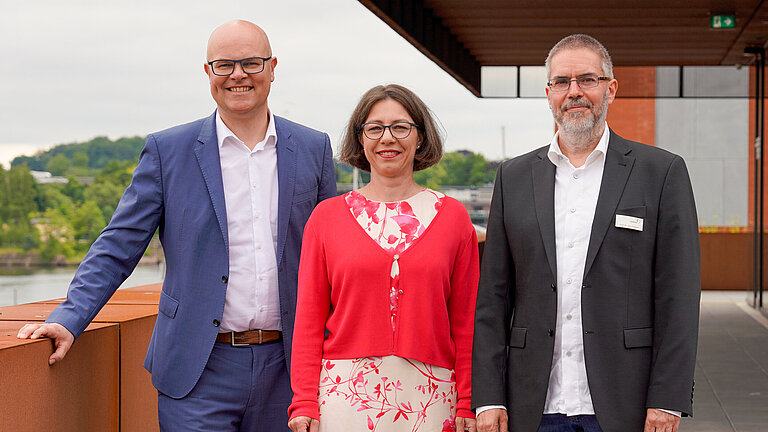
UXO clearance - It's time to start! - This was the title of a large network meeting organised by GEOMAR together with the Ministry of the Environment of Schleswig-Holstein: Minister Tobias Goldschmidt, Director Prof Dr Katja Matthes and Prof Dr Jens Greinert (from left to right). Photo: Sarah Uphoff

At the information and networking meeting, around 100 representatives of various interest groups exchanged views on the current status of the planned pilot project to recover old ammunition in the Baltic Sea: Schleswig-Holstein's Environment Minister Tobias Goldschmidt. GEOMAR Director Prof. Katja Matthes and Stefan Mehlhase from the German Federal Ministry for the Environment (from left to right) Photo: Sarah Uphoff
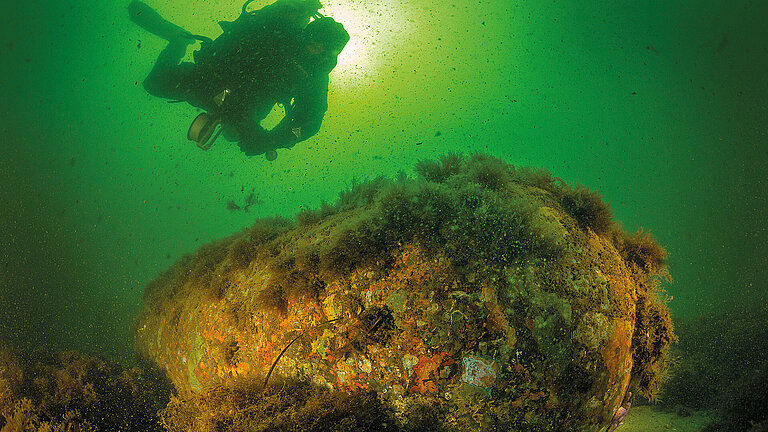
Some 1.6 million tonnes of unexploded ordnance are polluting the North and Baltic Seas. The first pilot salvage operation is now being conducted in the Bay of Lübeck. Photo: Christian Howe
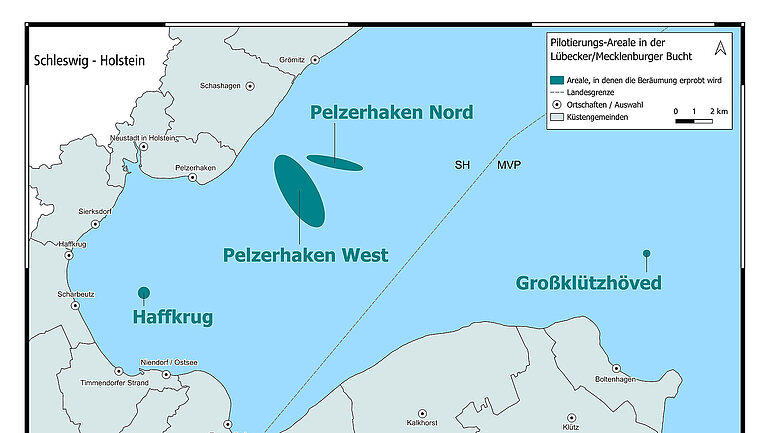
The first UXO will be recovered in these three areas off the coast of Haffkrug and Pelzerhaken from mid-August. This pilot project is expected to provide important information on how munitions can be removed from the sea in an efficient, safe and environmentally friendly manner in the future. Graphic: BMUV/Seascape
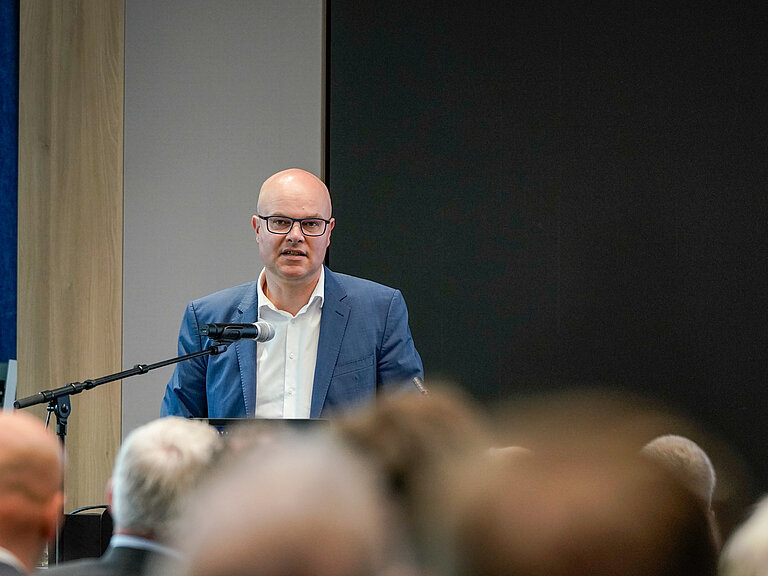
"For far too long, our oceans have been left to deal with the problem of around 1.6 million tonnes of military waste," said Tobias Goldschmidt, Minister for Energy Conversion, Climate Protection, Environment and Nature in the German state of Schleswig-Holstein. Photo: Sarah Uphoff

Dr Wolfgang Sichermann, managing director of Seascape, presented the next steps in the BMUV's immediate action programme. Photo: Sarah Uphoff
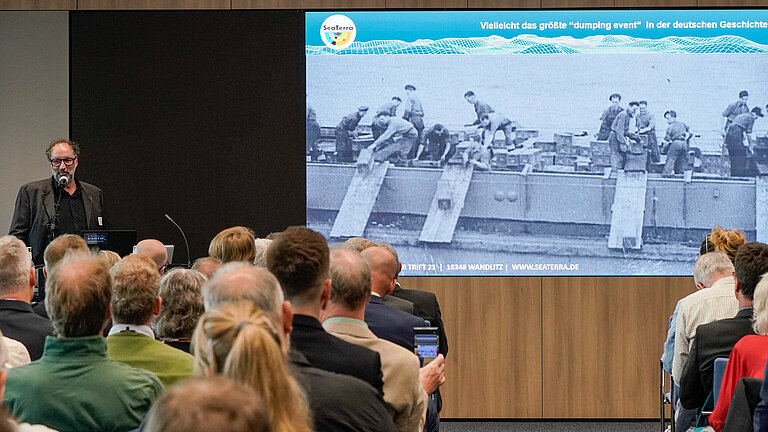
After the end of the Second World War, tens of thousands of tonnes of conventional munitions were dumped directly from arsenals and munitions factories in the North Sea and Baltic Sea as part of Germany's demilitarisation. This can be seen in the archive image shown by Dieter Guldin, Chief Operation Officer of the clearance company Sea Terra, in his presentation. Photo: Sarah Uphoff
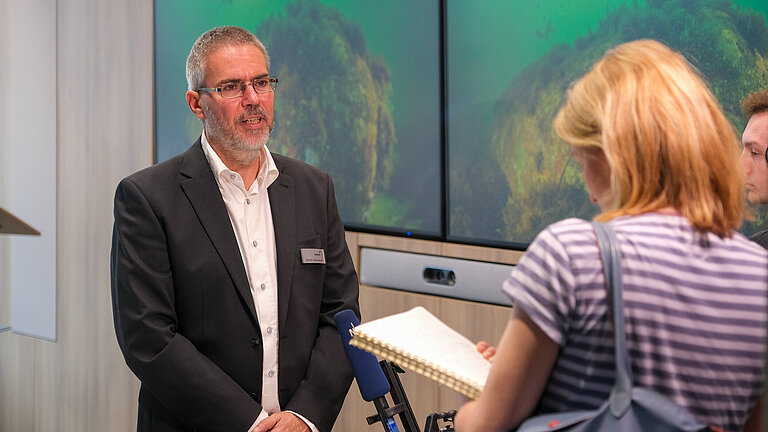
Professor Jens Greinert and his Deep Sea Monitoring Group have been researching munitions contamination in the North and Baltic Seas for almost ten years. The results of this research have provided the basis for the clearance operations that are now beginning. Greinert and his team will provide close scientific support to monitor the environmental impact. Photo: Julia Gehringer


